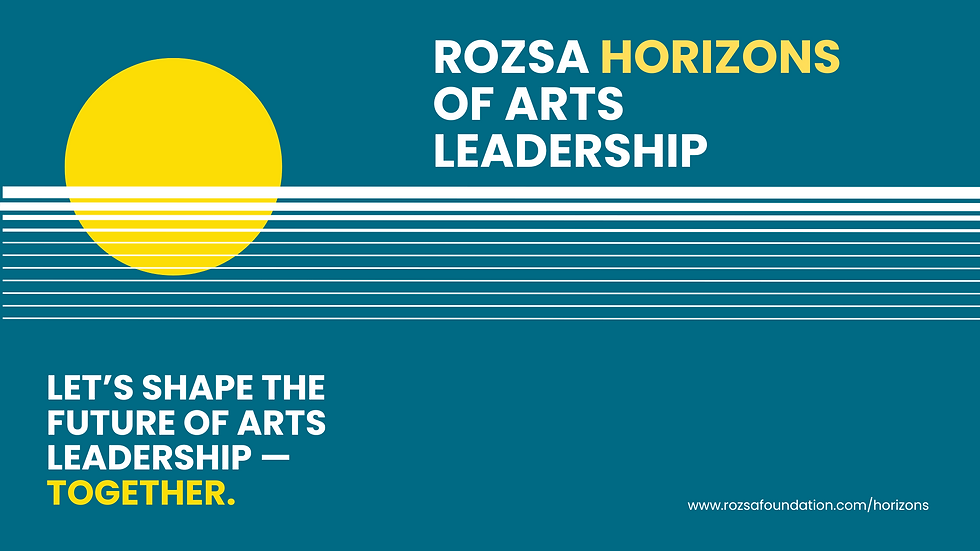Connecting Community Across Disciplines
- Rozsa Foundation
- Apr 10, 2017
- 3 min read
Updated: Apr 1, 2021

Contributed by Val Duncan, Artistic Producer of Theatre Encounter, following the presentation of her RAMP Action Learning Project. [April 10, 2017] My Action Learning Project started as an audience development initiative. The artistic directors at Theatre Encounter had known for years that their work aligned more closely with contemporary visual arts than with traditional theatre, but, the company just couldn’t seem to integrate people interested in contemporary art into their audiences; those who were fans of theatre were not likely to be engaged by the highly experimental performance art that the company was making, and those who were in the visual arts scene were often not really interested in going to the theatre in the first place. We knew that the audience for our work existed, it was simply that those audiences were going to see performance art at a gallery, rather than coming to see an Encounter show at a theatre. The end result was the company’s strong artistic work largely going unwatched.
Encounter makes interdisciplinary work, and so an interdisciplinary approach was needed. The idea of a creative collaboration with visual artists that could potentially allow Encounter to reach those audiences directly had been talked about, but, for various reasons, never materialized. The RAMP Action Learning Project presented a perfect opportunity for me to finally set those wheels in motion. Using the tools that I gained throughout the program, I set out to create strategies for collaboration on an organizational level – that is, resource-based arts partnerships.
I began by analyzing Encounter’s audience data in order to determine its demographic, and then compared that data to organizations across visual arts, dance, and theatre in order to determine which organizations Encounter shared both artistic and market intersections with. The next step was to figure out what Encounter had to offer to those organizations in terms of a collaborative partnership. Since many of the ‘target’ organizations were based in visual arts rather than theatre, this meant thinking outside of the box a little bit: what opportunities can a ‘theatre’ company offer to a visual artist, and how can we turn those opportunities into long-term relationships with visual arts organizations and, by extension, their audiences?
Space to build and perform work is a top priority for many arts groups in Calgary – there never seems to be enough reliable and affordable rehearsal spaces – so venue sharing and sponsorship was a cornerstone of the strategies I proposed. But there are other resources we can all share: talent, expertise, administrative support and marketing. When I brought my ideas to Encounter’s board, other ideas emerged, such as artistic residencies in cooperation with visual arts organizations, or an expansion of the company’s existing internship program to help our resources support the development of emerging artists.
Ultimately, these strategies are only starting points, and there is still much work to be done and many hurdles to overcome in order to make these arts partnerships a reality. However, I feel that having the chance to present those strategies to the company has created a new ‘call to action’ within the organization, turning an “it would be nice to do someday” attitude into a realistic goal based on actual research.
Projects like this also present a more holistic, but equally important, opportunity: the chance to make connections across arts organizations in the Calgary arts community, and to foster strong interdisciplinary relationships among them. The resource and expertise sharing represented by an arts partnership - not just within a single discipline, but across all of the arts - can only improve the work of all the artists in a community, and make the arts industry more resilient and viable at a time when many of us – large and small organizations alike - are struggling to capture audiences and funding.






Comments